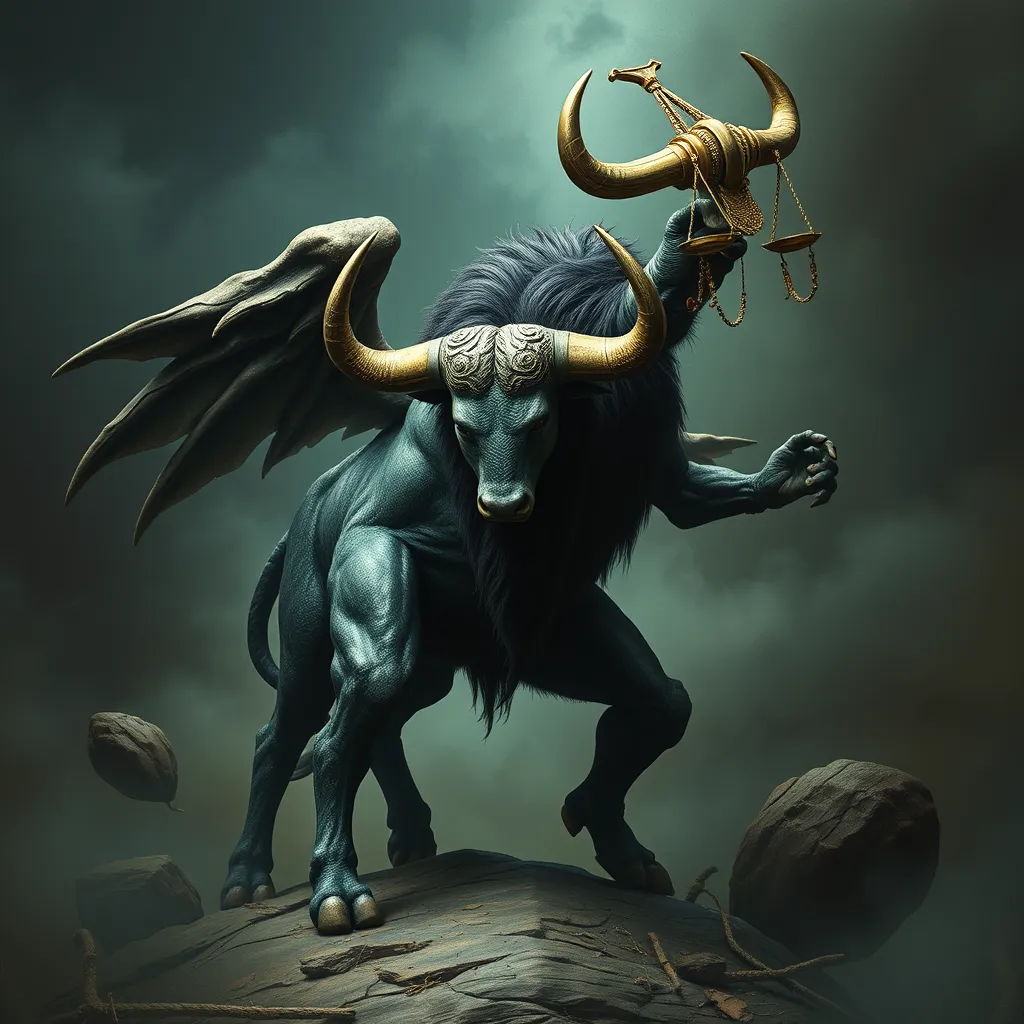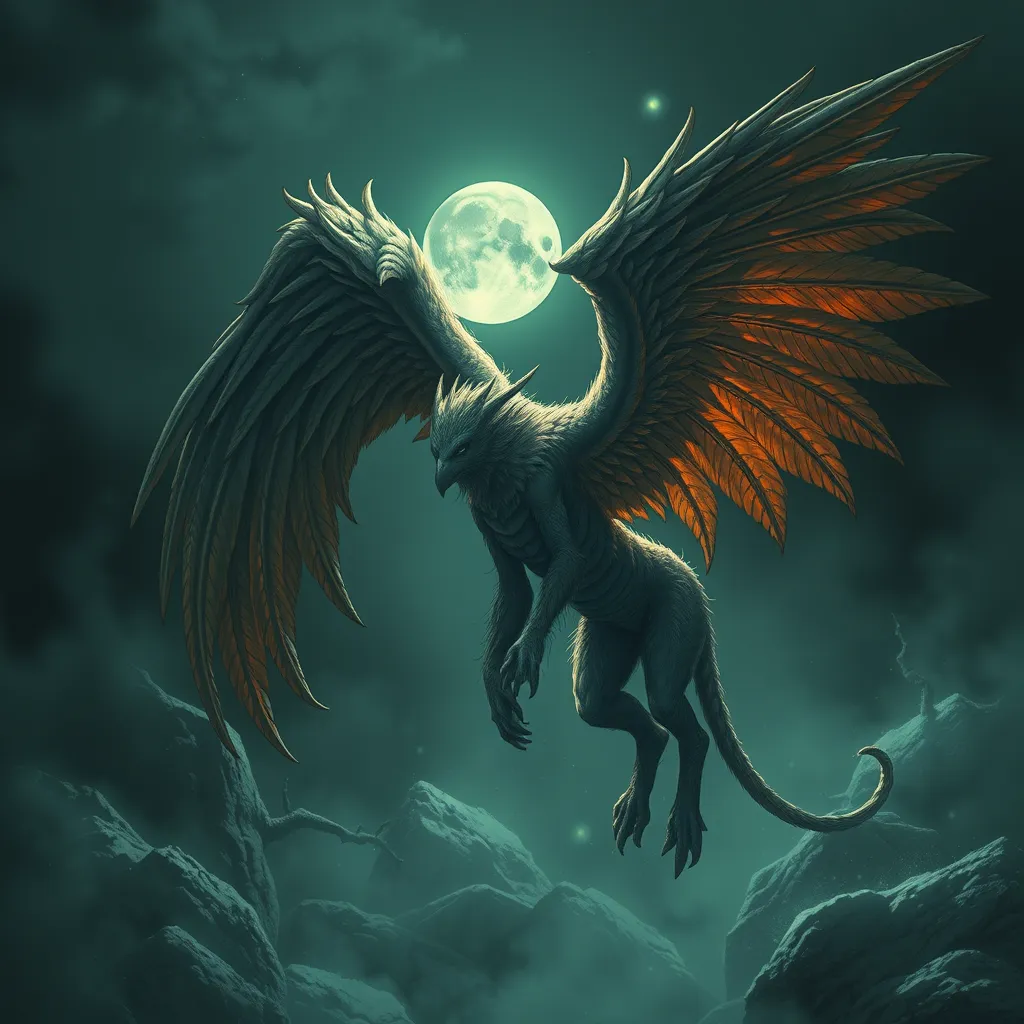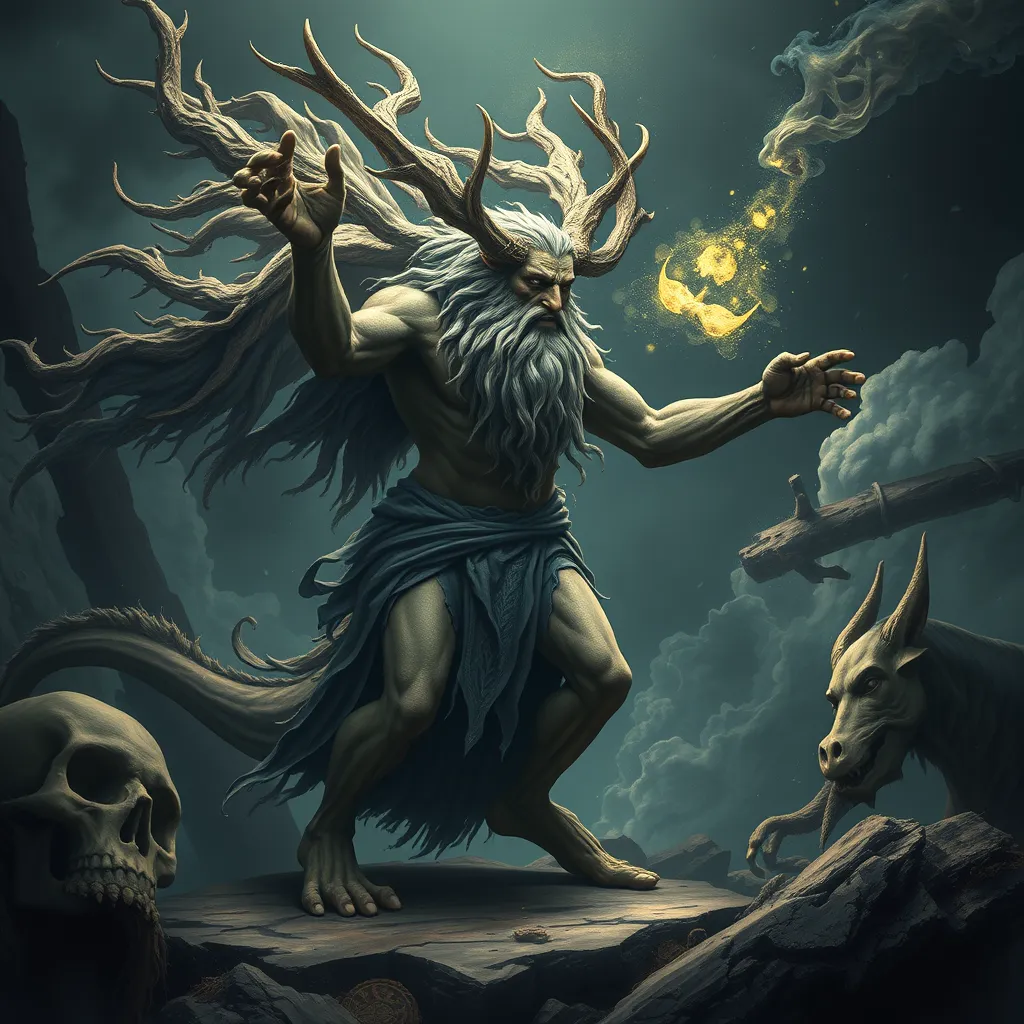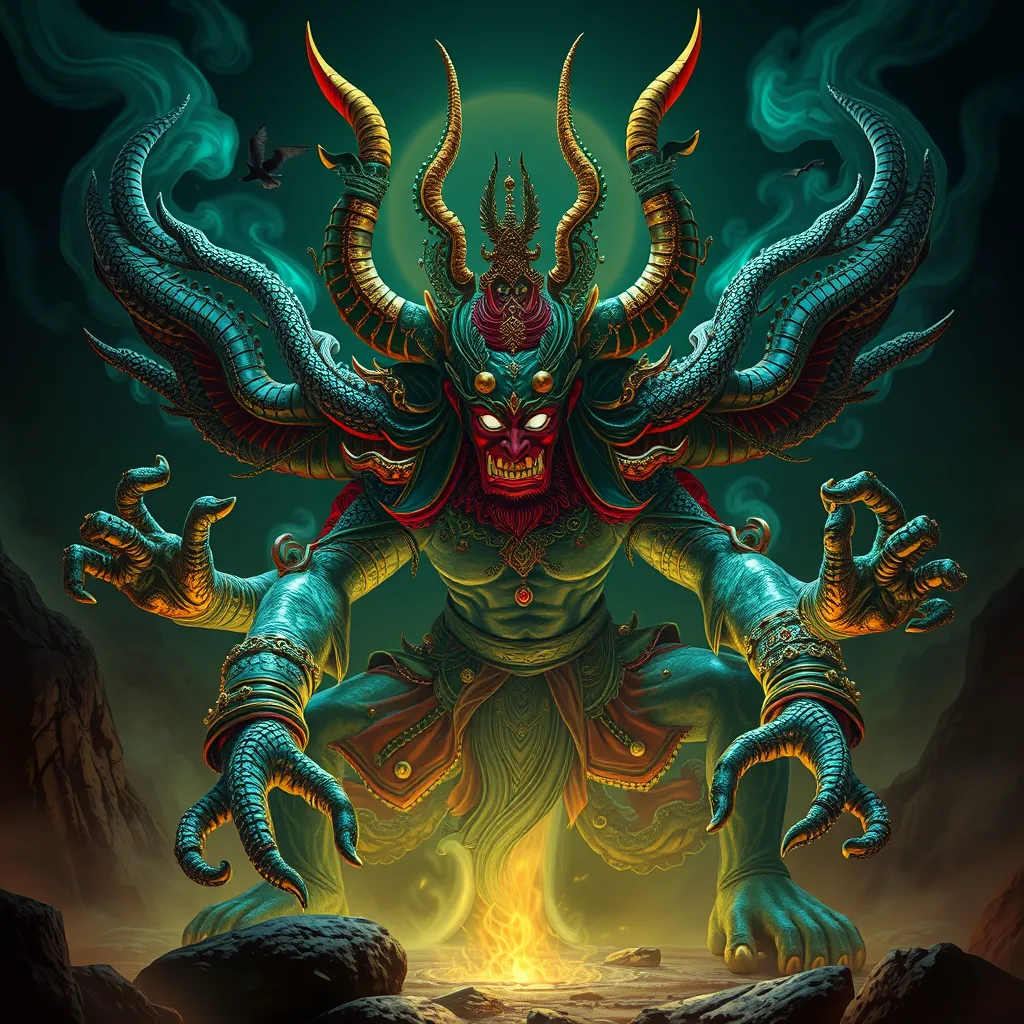The Minotaur and the Human Condition: Examining the Monster’s Relationship to Morality and Justice
I. Introduction
The myth of the Minotaur, a creature that is half-man and half-bull, has captivated audiences for centuries. Originating from ancient Greek mythology, the Minotaur’s story intertwines themes of power, monstrosity, and human nature. As a figure representing both chaos and the darker aspects of humanity, the Minotaur serves as a crucial symbol in understanding morality and justice within the human condition.
This article aims to delve into the significance of the Minotaur in literature and culture, exploring its implications for morality and justice. By examining the origins of the Minotaur, the labyrinth it inhabits, the role of sacrifice, the hero Theseus, and the broader societal reflections it offers, we can uncover valuable insights into our own moral landscapes.
II. The Origin of the Minotaur: A Reflection of Human Flaws
The backstory of the Minotaur begins with King Minos of Crete, who angered the gods and was punished with a monstrous offspring. The union between Pasiphaë, Minos’s wife, and a divine bull created the Minotaur, a being that embodies the consequence of human flaws—hubris, desire, and deceit.
Symbolically, the Minotaur represents the failings inherent in humanity. It is a manifestation of the uncontrollable instincts that lie within us all. Its creation underscores the idea that monstrosity often stems from moral corruption and the inability to confront our darker selves.
- Hubris: The pride of King Minos led to his downfall.
- Desire: Pasiphaë’s unnatural lust for the bull illustrates the dangers of unchecked passion.
- Deceit: The Minotaur itself is a product of deception, hidden away from society.
This link between monstrosity and moral corruption serves as a cautionary tale, urging humanity to confront its own flaws before they manifest in destructive ways.
III. The Labyrinth: A Metaphor for Moral Complexity
The labyrinth, designed by Daedalus to contain the Minotaur, symbolizes the complexity of moral choices. Its intricate pathways mirror the convoluted nature of ethical dilemmas that people face in their lives.
As one navigates through the labyrinth, it becomes a moral allegory for the journey of self-discovery and the search for justice. Each turn represents a decision, and the possibility of losing oneself echoes the struggle to maintain one’s moral compass in a chaotic world.
- Confusion: The labyrinth’s structure reflects the uncertainties of moral decision-making.
- Choices: Each path taken is a representation of ethical choices that shape our destiny.
- Self-Discovery: The journey through the labyrinth is akin to the quest for understanding oneself and one’s beliefs.
This metaphor highlights the idea that moral complexity is inherent in the human experience, challenging individuals to confront their choices and the consequences they entail.
IV. The Role of Sacrifice in the Minotaur Myth
Central to the Minotaur myth is the theme of sacrifice. The Athenians were required to send tributes to Crete, which included young men and women sacrificed to the Minotaur. This practice raises questions about the nature of justice and the ethics surrounding sacrifice.
In this context, sacrifice becomes a means of appeasing a monstrous entity, reflecting a skewed sense of justice where the innocent suffer for the sins of others. This notion of scapegoating introduces a critical examination of societal norms and the moral implications of sacrificing the few for the sake of the many.
- Justice: The concept of justice is distorted when it demands the lives of the innocent.
- Scapegoating: The act of blaming a single entity for broader societal issues is a recurring theme in human history.
- Ethical Dilemmas: The moral questions surrounding sacrifice challenge individuals to consider the price of justice.
This exploration of sacrifice in the Minotaur myth emphasizes the ethical complexities that arise in the pursuit of justice and the often tragic consequences of societal decisions.
V. Theseus: The Hero and the Dilemma of Justice
Theseus, the hero of the Minotaur myth, embodies the tension between personal justice and societal expectations. His decision to enter the labyrinth and confront the Minotaur illustrates the struggle between individual moral imperatives and the collective demands of society.
Theseus’s motivations are multifaceted: he seeks to save the youths of Athens, to prove his bravery, and to establish his legacy as a hero. However, his journey raises critical questions about the nature of justice:
- Personal Justice: Is it justifiable to pursue personal glory at the expense of others?
- Heroism: What does it mean to be a hero in a world filled with moral ambiguity?
- Societal Expectations: How do societal pressures shape our understanding of justice?
Theseus’s actions reflect the complexities of heroism and the moral dilemmas that arise when one grapples with the expectations of society versus personal beliefs.
VI. The Minotaur as a Mirror to Society
The Minotaur myth serves as a reflection of societal fears and moral dilemmas. The monster encapsulates the anxieties of a culture grappling with its darker impulses and the consequences of unchecked power.
Through its narrative, the Minotaur critiques social norms, revealing the underlying tensions within societies:
- Fear of the Other: The Minotaur represents the fear of what is different or foreign.
- Societal Critique: The myth challenges the status quo, urging a re-examination of justice and morality.
- Modern Parallels: The themes of monstrosity and moral failure resonate with contemporary societal issues, from inequality to violence.
By examining the Minotaur’s story, we can draw parallels to modern societal challenges, highlighting the enduring relevance of this myth in critiquing our moral landscape.
VII. Lessons from the Minotaur: Morality, Justice, and Humanity
The Minotaur myth offers profound insights into human nature, emphasizing the importance of confronting our own “monsters.” By understanding the complexities of morality and justice, we can navigate the challenges of our existence more effectively.
Key lessons from the Minotaur include:
- Self-Reflection: Recognizing our own flaws is crucial in the pursuit of moral integrity.
- Empathy: Understanding the consequences of our actions on others fosters compassion.
- Ongoing Relevance: The Minotaur serves as a reminder of the moral dilemmas that persist in contemporary society.
These insights encourage a deeper examination of our ethical beliefs and the societal structures that influence them.
VIII. Conclusion
In exploring the Minotaur myth, we uncover key themes of morality and justice that resonate throughout human history. By examining the origins of the Minotaur, the labyrinth, the role of sacrifice, and the hero’s journey, we gain a richer understanding of the complexities of the human condition.
The enduring legacy of the Minotaur lies in its ability to provoke reflection on our moral choices, societal norms, and the nature of monstrosity. Ultimately, the relationship between monstrosity, morality, and justice remains a relevant and critical conversation, urging us to confront the monsters within ourselves and our societies.



